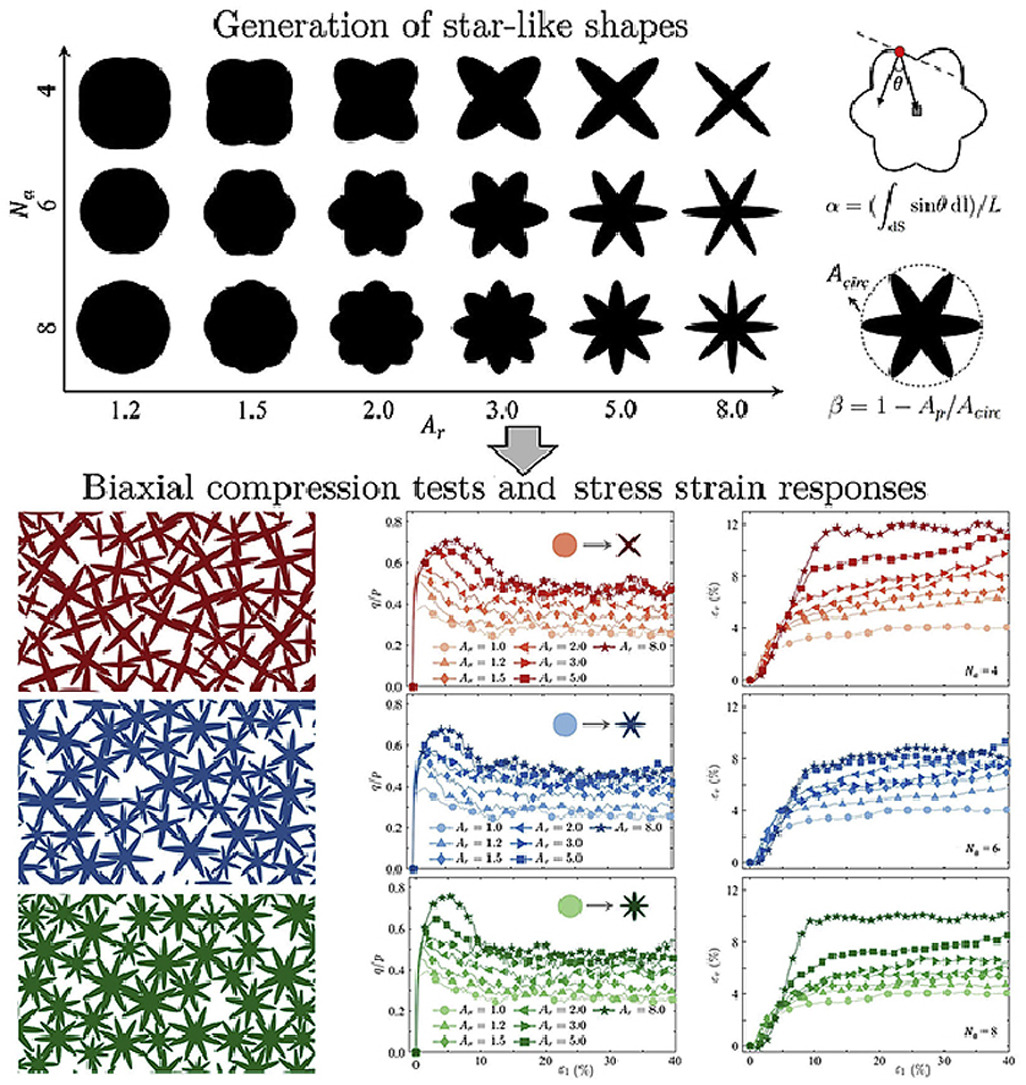• Biaxial compression of star-shaped particles with varying arm number and aspect ratio.
• Monotonic dependence of macroscopic shear strength and interlocking patterns on particle non-convexity.
• Non-monotonic dependence of packing fraction and particle rotation behavior on particle non-convexity.
• Distinct contact modes and features exhibited by highly non-convex particles.
• Competing role of particle interlocking and excluded volume effects.
This study investigates the effect of non-convexity on the rotational characteristics and contact mechanisms of two-dimensional star-like shapes using multiellipse-based discrete element modeling (DEM). Biaxial shearing tests are conducted on star-shaped geometries with varying arm numbers and aspect ratios of the intersecting ellipses. The results indicate a non-monotonic relationship between overall particle rotation and increasing non-convexity, highlighting a more pronounced role of non-convexity in promoting local interlocking at particle contacts. Moreover, high non-convexity facilitates the formation of multiple contact points between interacting particles, which generally show higher stability than single-point contacts, except in the case of highly non-convex shapes. The geometric complexity introduced by non-convexity induces significant heterogeneity in the contact network and inter-particle force distributions. Finally, a spatial analysis of contact patterns reveals the coexistence of interlocking and excluded volume effects, where the alignment of the arms and valleys results in two distinct peaks in contact frequency and governs the initiation location of particle interactions. Meanwhile, the intermediate surfaces become less involved in particle contacts as non-convexity increases.

